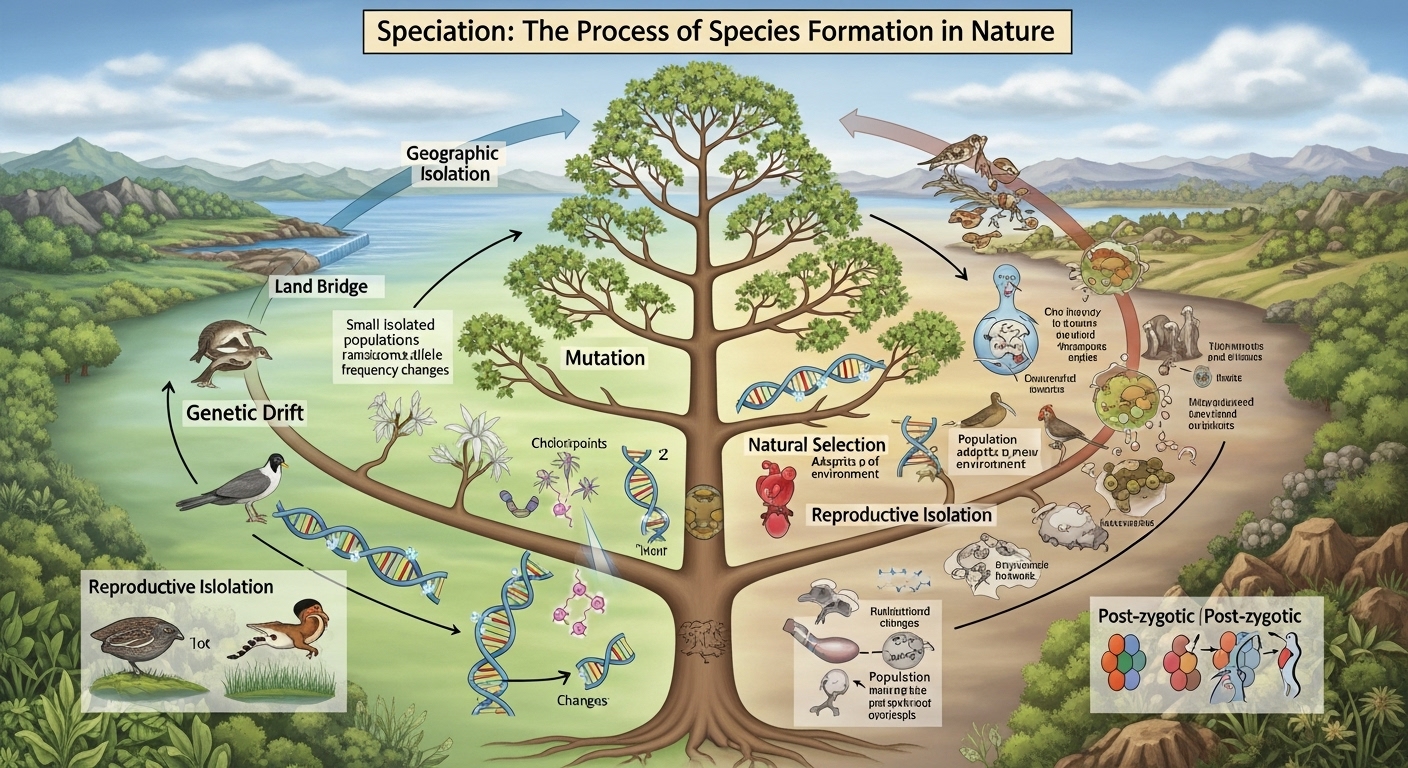
Speciering: The Process of Species Formation in Nature
Speciering is a fascinating biological process through which new species evolve from existing ones. It represents one of the most essential mechanisms behind the diversity of life on Earth. From the tiniest microorganisms to complex mammals, speciering explains how unique species develop over time due to genetic variation, isolation, and environmental pressures. Understanding speciering helps scientists explore the history of evolution and the intricate web of life that connects all organisms.
In simple terms, speciering refers to the splitting of one species into two or more distinct species that can no longer interbreed successfully. This process doesn’t occur overnight—it’s a gradual, complex journey influenced by multiple ecological and genetic factors.
What is Speciering and Why It Matters
Speciering lies at the heart of evolutionary biology. Without it, life on Earth would remain static, lacking the diversity we observe today. Through speciering, organisms adapt to different environments, creating new niches and contributing to the balance of ecosystems.
This process is crucial for:
-
Biodiversity Expansion: Speciering increases the variety of species in an ecosystem.
-
Ecological Balance: It allows species to occupy different ecological roles, maintaining balance in nature.
-
Evolutionary Progress: Speciering drives genetic differentiation and the survival of the fittest.
Types of Speciering
There are several types of speciering that occur under varying conditions. These include:
| Type of Speciering | Description | Example |
|---|---|---|
| Allopatric Speciering | Occurs when a population is geographically separated, leading to genetic divergence. | Formation of Darwin’s finches on the Galápagos Islands. |
| Sympatric Speciering | Happens without geographical separation, often due to genetic mutations or niche differentiation. | Apple maggot flies adapting to different host plants. |
| Peripatric Speciering | Involves a small population becoming isolated at the edge of a larger one, evolving differently. | London underground mosquitoes diverging from surface populations. |
| Parapatric Speciering | Occurs in populations that live in adjacent areas with limited gene flow. | Grass species evolving in response to soil pollution. |
Each form of speciering plays a distinctive role in shaping the course of evolution.
The Mechanisms Behind Speciering
Speciering occurs through a combination of evolutionary forces. The primary mechanisms include genetic isolation, mutation, natural selection, and genetic drift.
Genetic Isolation
Genetic isolation is the cornerstone of speciering. When populations of the same species are separated by physical barriers—like mountains, rivers, or oceans—they stop exchanging genetic material. Over generations, differences accumulate, eventually leading to the formation of new species.
Mutation
Mutations are random changes in an organism’s DNA. Though many mutations are neutral or harmful, some provide advantages that help organisms survive better in specific environments. These advantageous mutations can eventually lead to speciering by creating unique genetic traits.
Natural Selection
Natural selection acts as the sculptor of speiering. It ensures that individuals with beneficial traits reproduce more successfully. Over time, these traits become dominant, and distinct species emerge, adapted to their environment.
Genetic Drift
In small populations, random events can cause certain traits to become more common purely by chance. This genetic drift accelerates divergence, especially when populations are isolated, facilitating .
Examples of Speciering in Nature
Speciering can be observed in numerous natural examples that highlight evolution in action.
-
Darwin’s Finches: These birds from the Galápagos Islands evolved different beak shapes based on available food sources. Each species adapted to its niche through speiering.
-
Cichlid Fish in African Lakes: Hundreds of cichlid species evolved from a few ancestors, each adapted to different habitats within the lakes.
-
Polar Bears and Brown Bears: Through, polar bears adapted to Arctic environments while brown bears continued thriving in forests.
These examples illustrate that is not just theoretical—it is a continuous, observable process shaping our natural world.
Speciering and Human Evolution
Speciering has also played a significant role in human evolution. Modern humans (Homo sapiens) share a common ancestor with Neanderthals and Denisovans. Over thousands of years, isolation and adaptation to different environments led to the that produced distinct human lineages.
Although these groups once interbred, the differences between them highlight how shapes species even within the same genus. This process underscores the adaptability and resilience of life through changing climates and environments.
The Role of Environmental Factors in Speciering
Environmental changes are among the strongest triggers of spciering. Climate shifts, natural disasters, and changes in food sources can all create conditions that promote isolation and genetic divergence.
For instance:
-
Glacial periods separated animal populations, leading to unique species after the ice retreated.
-
Volcanic eruptions or forest fragmentation created isolated pockets of species that evolved independently.
-
Ocean currents and island formation played significant roles in marine and island.
When combined with genetic mechanisms, these environmental pressures accelerate the formation of new species, contributing to the dynamic nature of evolution.
Modern Research and Speciering
Contemporary genetic research has deepened our understanding of . Scientists use molecular tools like DNA sequencing and phylogenetic analysis to trace the evolutionary pathways of different species.
One groundbreaking discovery is that can occur more rapidly than previously thought. In some cases, new species have been observed forming within just a few hundred generations. Advances in genomics have shown that even subtle genetic differences can trigger reproductive isolation—one of the key requirements for .
Speciering in the Context of Conservation
Understanding speiering is vital for biodiversity conservation. When conservationists recognize how species diverge and adapt, they can better protect genetic diversity and ecological stability.
| Aspect | Impact of Understanding Speciering |
|---|---|
| Habitat Protection | Helps identify unique populations that require protection. |
| Endangered Species | Aids in recognizing cryptic species that may be overlooked. |
| Ecosystem Restoration | Ensures the right species are reintroduced to maintain balance. |
By applying knowledge of , conservation efforts can become more targeted and effective, ensuring that evolutionary processes continue naturally.
Challenges and Misconceptions About Speciering
Despite being a well-documented process, speciering is sometimes misunderstood. A common misconception is that species suddenly appear or that evolution is a linear process. In reality, involves gradual, branching changes driven by genetic variation and environmental adaptation.
Another challenge lies in identifying when is complete. Sometimes, two populations may show genetic divergence but still interbreed, making classification complex. Scientists rely on multiple criteria—morphological, genetic, and behavioral—to determine species boundaries accurately.
Conclusion
Specierng is an ongoing natural phenomenon that defines the very essence of life’s diversity. From isolated islands to deep oceans, it continuously shapes the living world through adaptation, mutation, and environmental influence.
By studying , we gain profound insight into how life evolves, adapts, and survives through time. It reminds us that evolution is not a static concept but a living process unfolding before our eyes. Whether in the wilderness, in laboratories, or within our own species’ history, stands as a testament to nature’s creativity and resilience.


